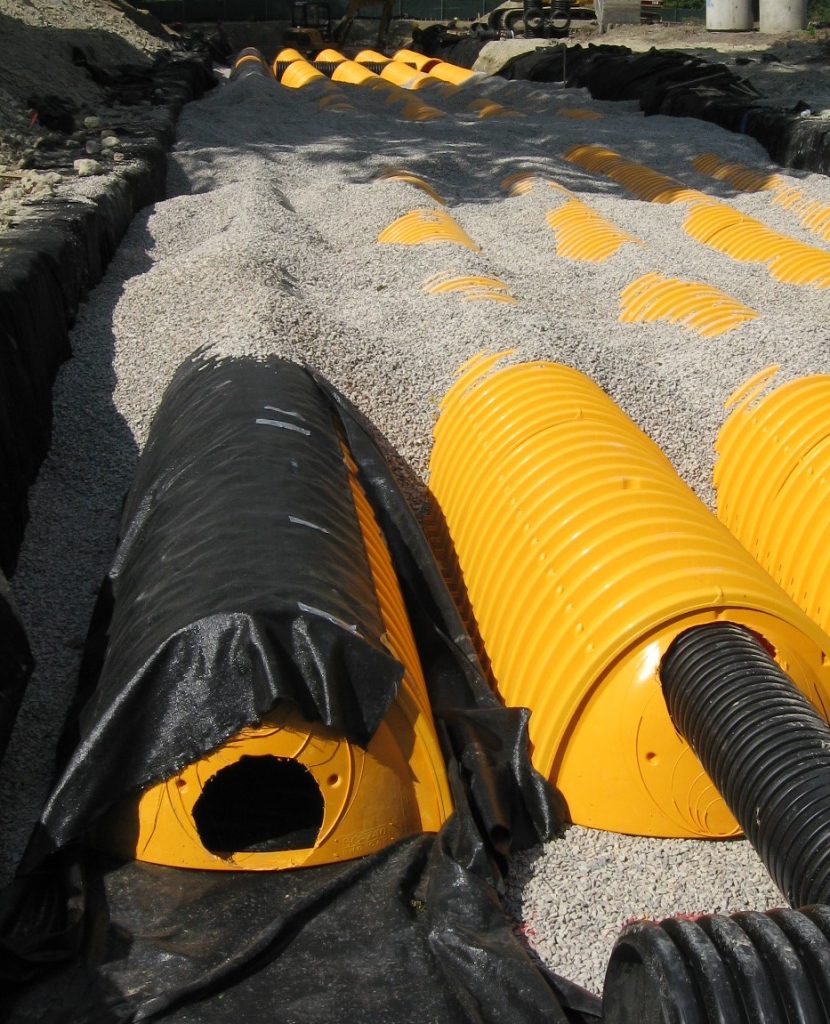Sub-Surface Recharge Systems Require Careful Planning

Stormwater Management can be a challenging, complex task for developers, especially in urban areas.
Although sub-surface recharge systems promote responsible and sustainable development by returning stormwater runoff to the groundwater after filtering it through underlying soil, implementing these systems in urban settings can be risky.
Standard design practices for these systems, however, can conflict with the conditions encountered on urban sites. When implementing a recharge system, many risks are unavoidable and often become the developer’s responsibility.
Several cities, such as Washington, D.C., Boston and New York, have implemented stormwater-management policies that require developers to manage some amount of stormwater onsite. For instance, Washington, D.C. municipal regulations require the retention of a 1.2-inch rainfall event for major land-disturbing activities. The Boston Water and Sewer Commission Stormwater Permit Regulations require the retention and recharge of an inch of runoff from impervious surfaces on nearly all projects and 1.25 inches of runoff for projects greater than 100,000 square feet of floor area. New York City’s Unified Stormwater Rule establishes stormwater-management practices that prioritize retention-first strategies.
One goal of retention-first stormwater management is to offset the presence of impervious areas. Retention strategies reduce the runoff volume to downstream drainage infrastructure and water bodies by retaining some runoff from impervious areas onsite; recharge systems return this runoff to the groundwater. Sub-surface recharge systems, such as perforated pipe, chambered systems or vertical recharge wells, are often implemented in urban settings.
Publisher
Development